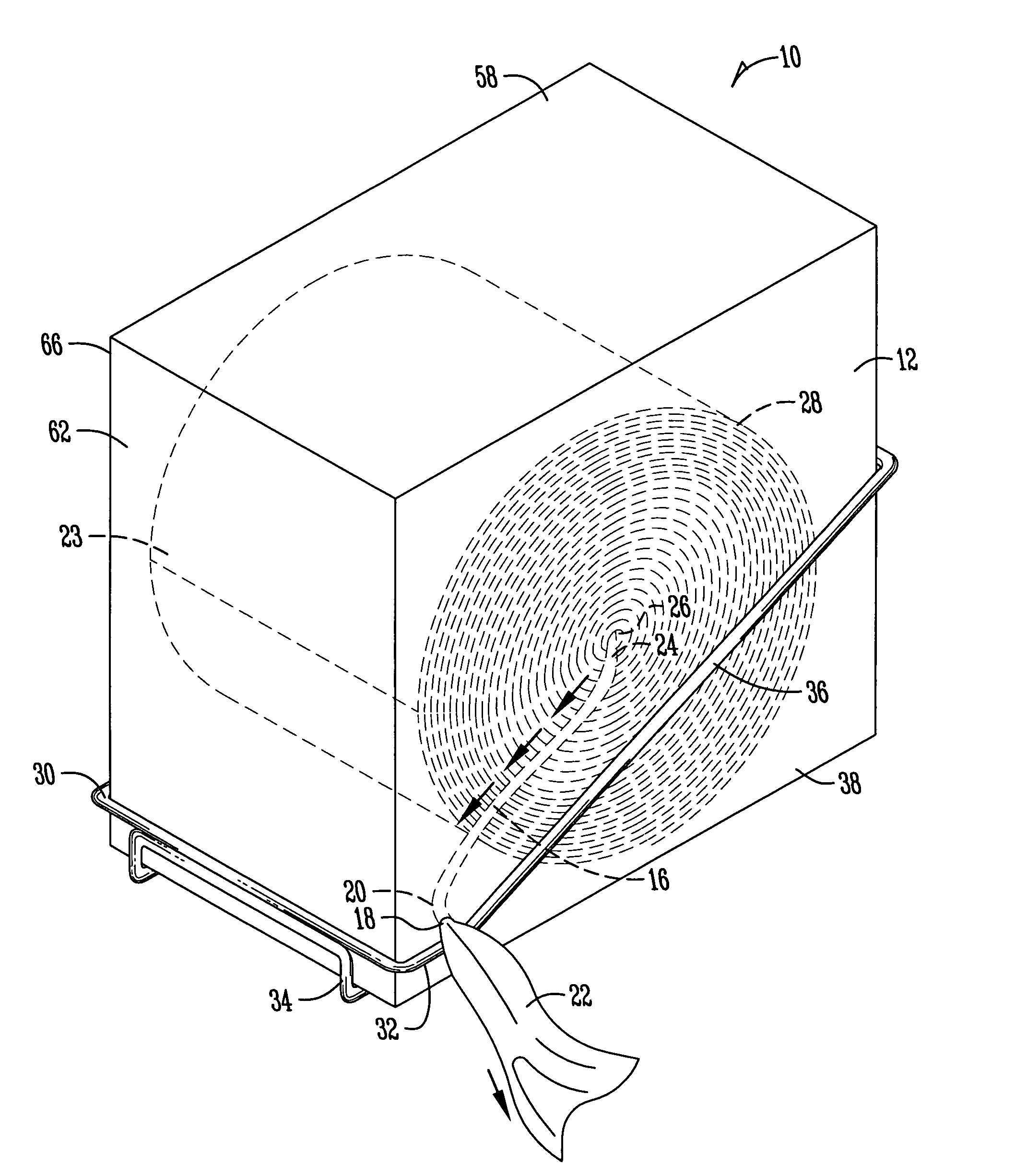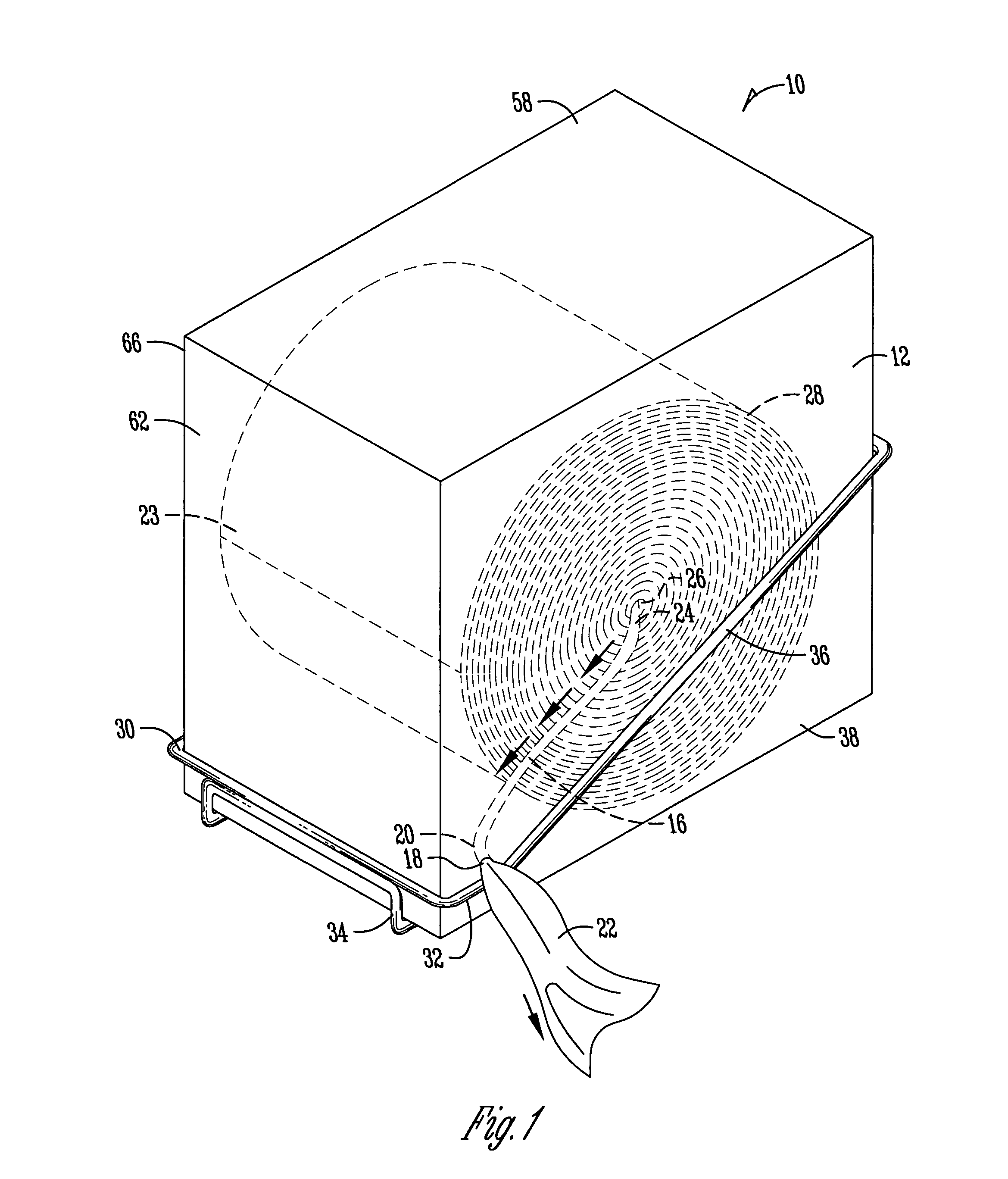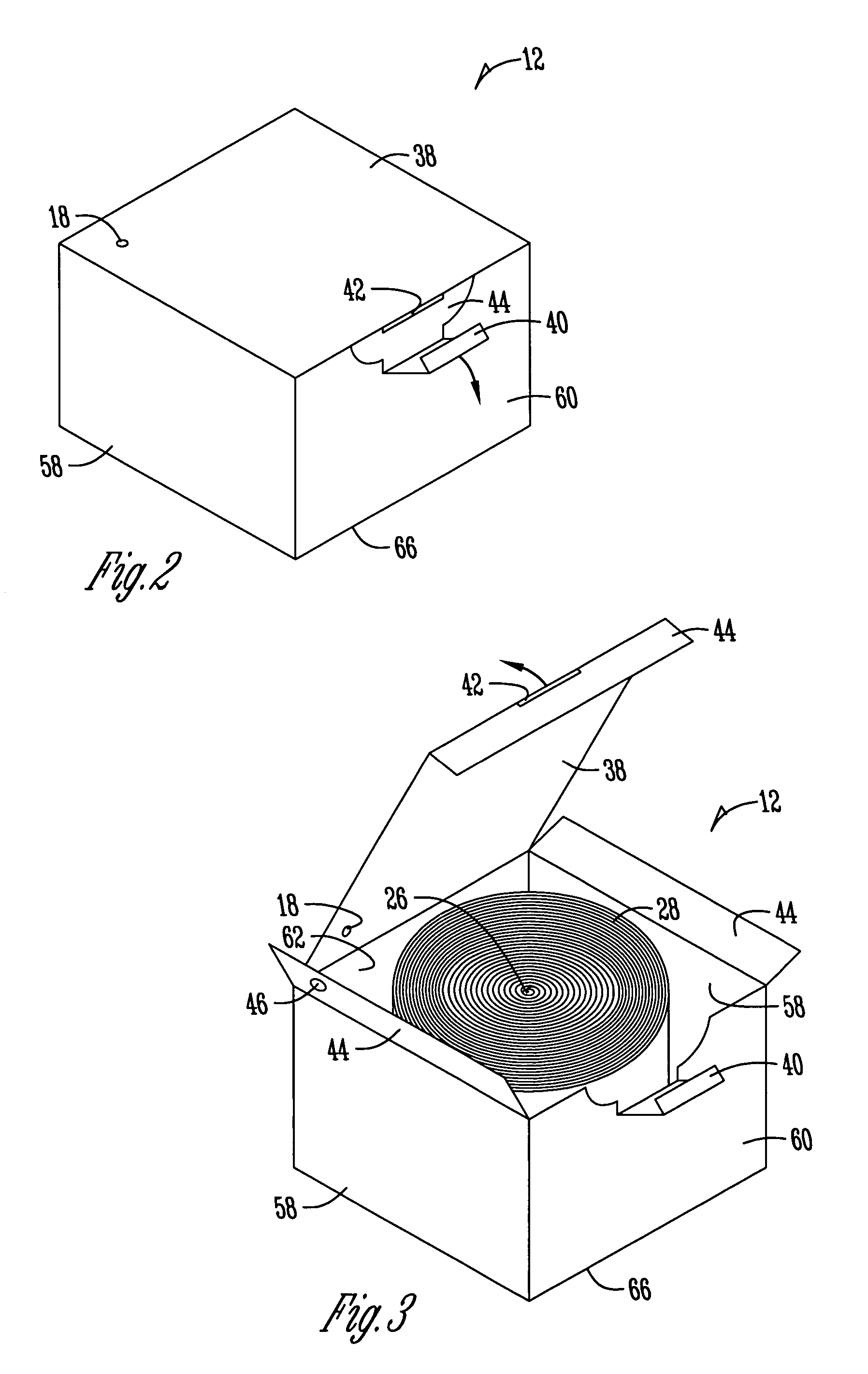Plastic bag dispensing unit
a dispensing unit and plastic bag technology, applied in the direction of thin material handling, article delivery, shop counters, etc., can solve the problems of unusable bags, waste of user time, and inability to completely prevent the spinning off of multiple bags, so as to prevent waste of time, prevent multiple feeds, and facilitate docking and positioning
- Summary
- Abstract
- Description
- Claims
- Application Information
AI Technical Summary
Benefits of technology
Problems solved by technology
Method used
Image
Examples
Embodiment Construction
[0043]Turning now to the drawings in which similar reference characters denote similar elements through the several views, illustrated in FIGS. 1-7 is the combination of various views and in-use configurations of the plastic bag dispensing unit. The plastic bag dispensing unit being described with particularity herein.
[0044]The plastic bag dispensing unit is referred to generally as 10. As seen in FIG. 1, the plastic bag dispensing unit has a axial center dispensing plastic bag roll 28 housed in a dispensing carton 12 being docked in a dispensing rack 14.
[0045]The rolled plastic bags 28 have a dispensing end 22 and a non-dispensing end 23. The dispensing end 22 and non-dispensing end 23 form the opposite ends of the rolled plastic bags 28. The dispensing end 22 is pulled from the axial center 26 bent along the axial center angle 24, follows the feed pathway 16, bends along the dispensing aperture angle 20 and exits the dispensing carton 12 through the lid dispensing aperture 18. The...
PUM
| Property | Measurement | Unit |
|---|---|---|
| degree angle | aaaaa | aaaaa |
| angle | aaaaa | aaaaa |
| electrostatic forces | aaaaa | aaaaa |
Abstract
Description
Claims
Application Information
 Login to View More
Login to View More - R&D
- Intellectual Property
- Life Sciences
- Materials
- Tech Scout
- Unparalleled Data Quality
- Higher Quality Content
- 60% Fewer Hallucinations
Browse by: Latest US Patents, China's latest patents, Technical Efficacy Thesaurus, Application Domain, Technology Topic, Popular Technical Reports.
© 2025 PatSnap. All rights reserved.Legal|Privacy policy|Modern Slavery Act Transparency Statement|Sitemap|About US| Contact US: help@patsnap.com



